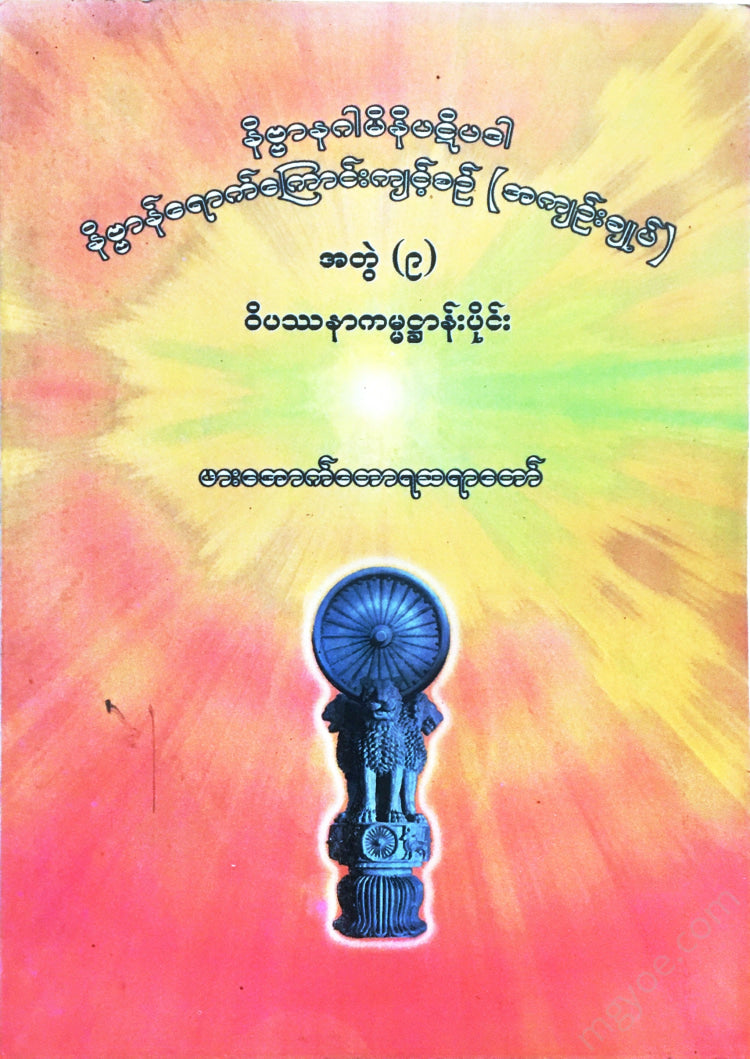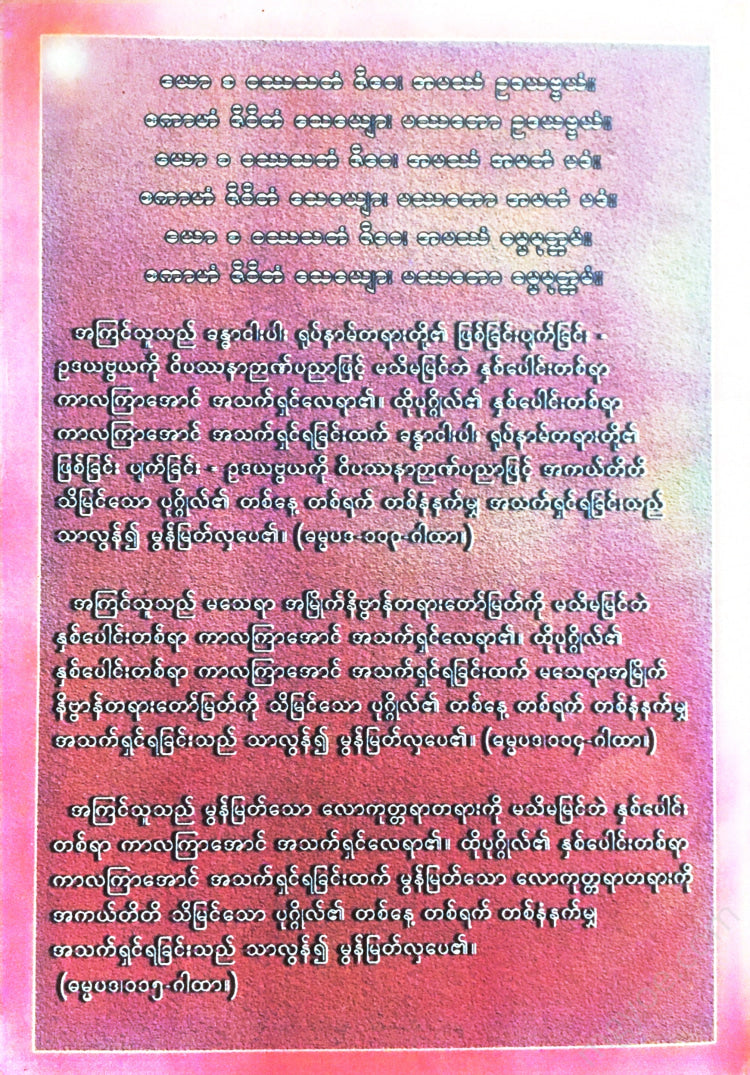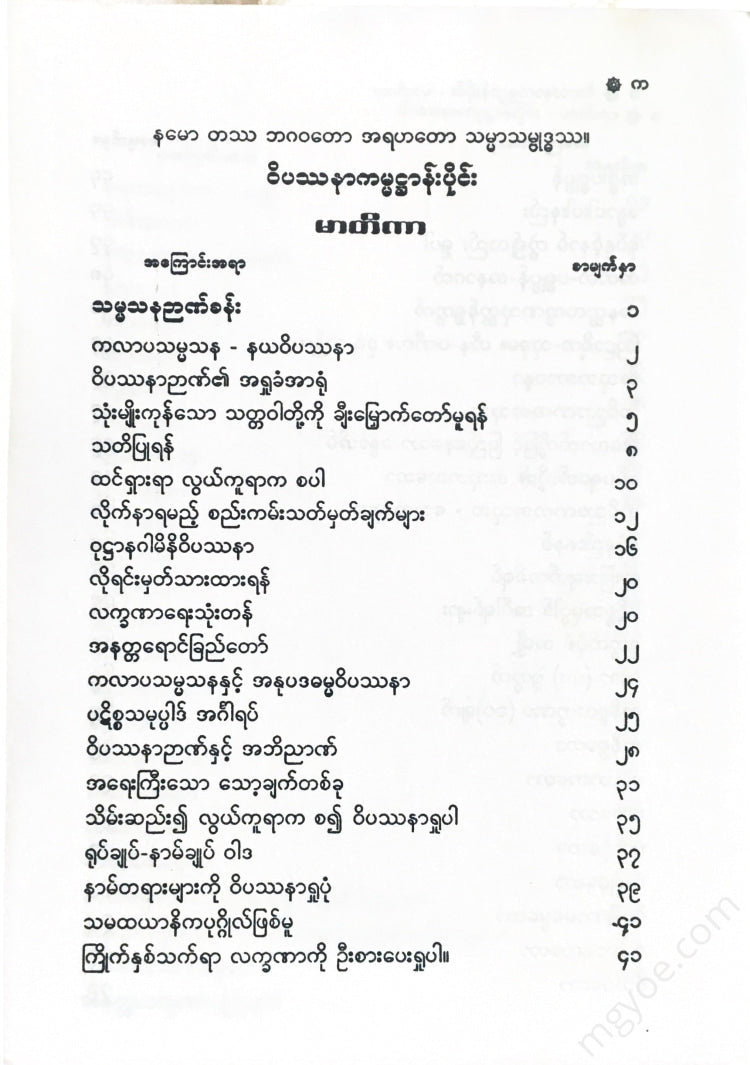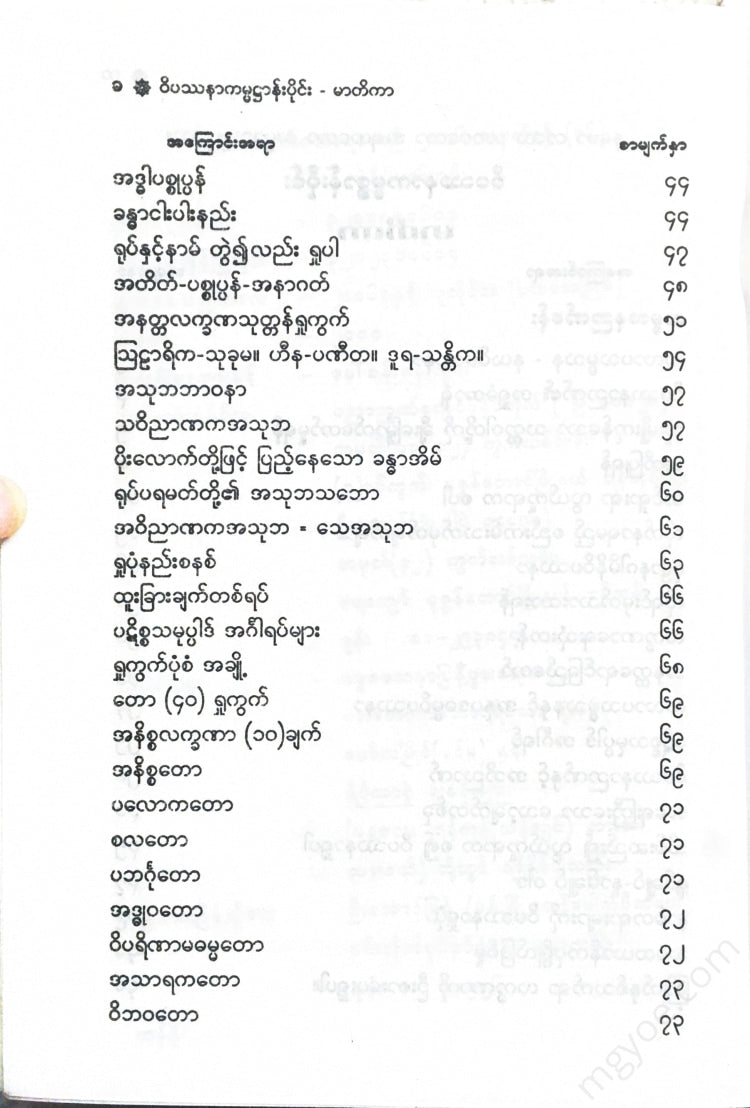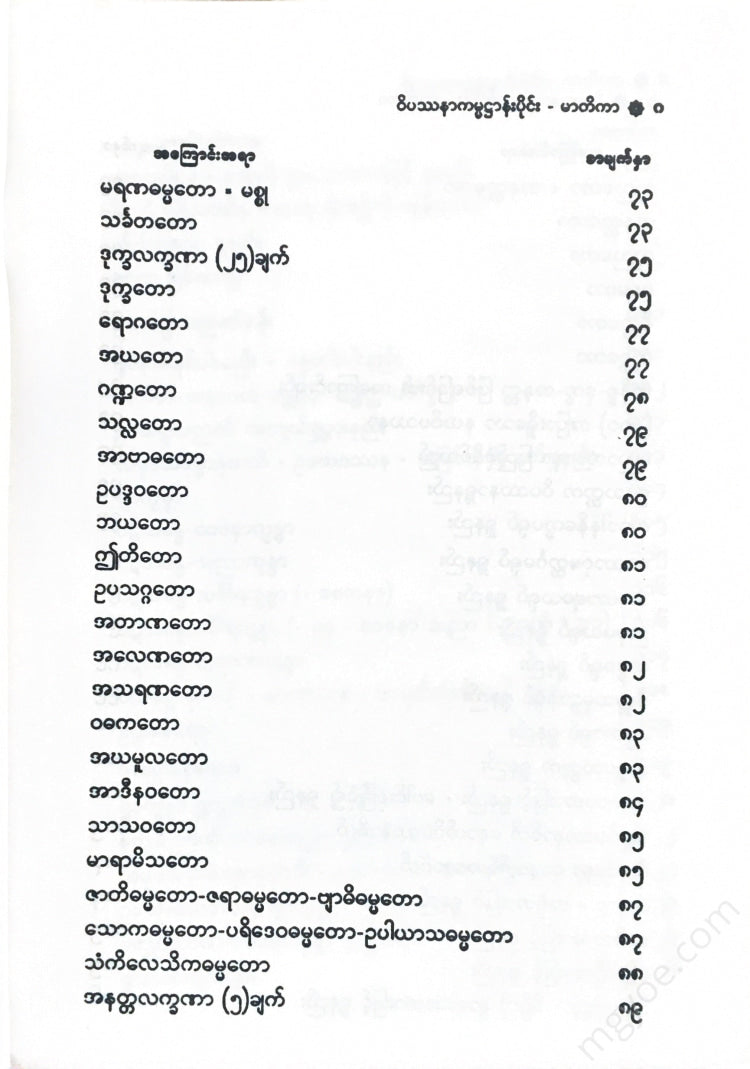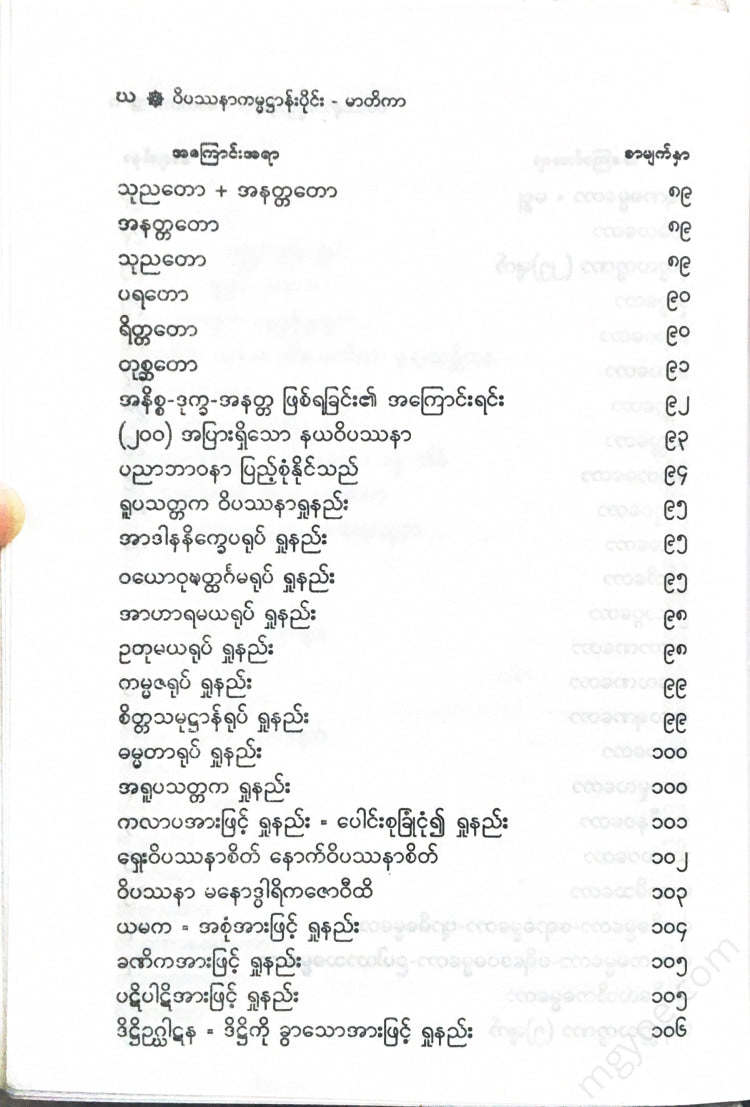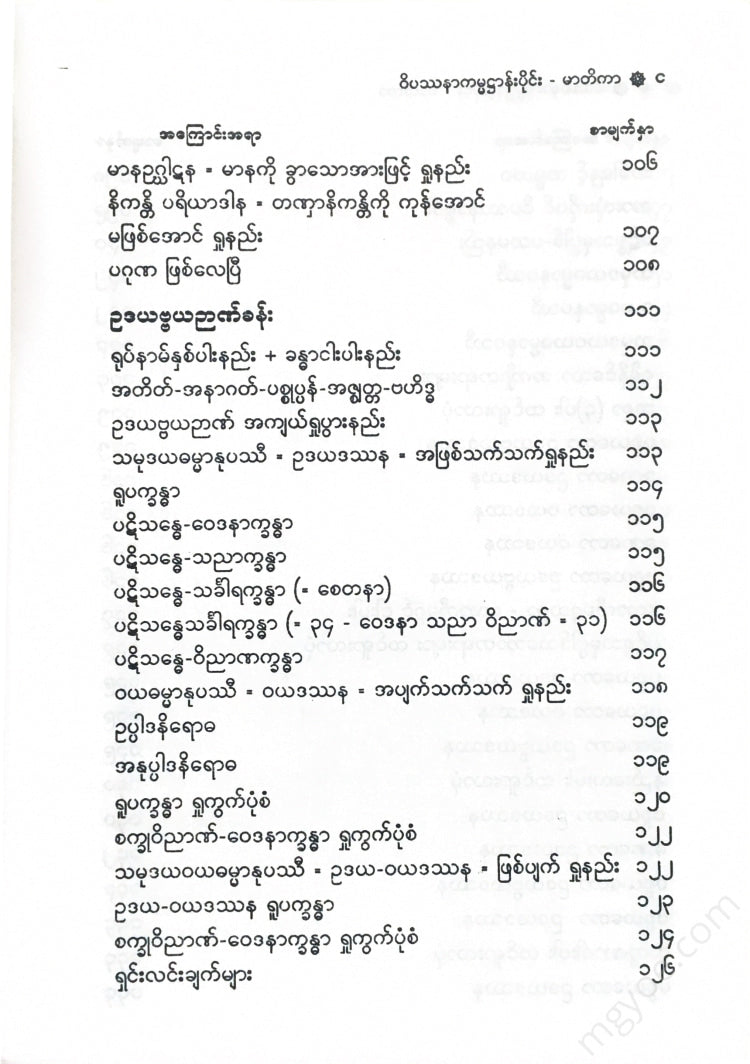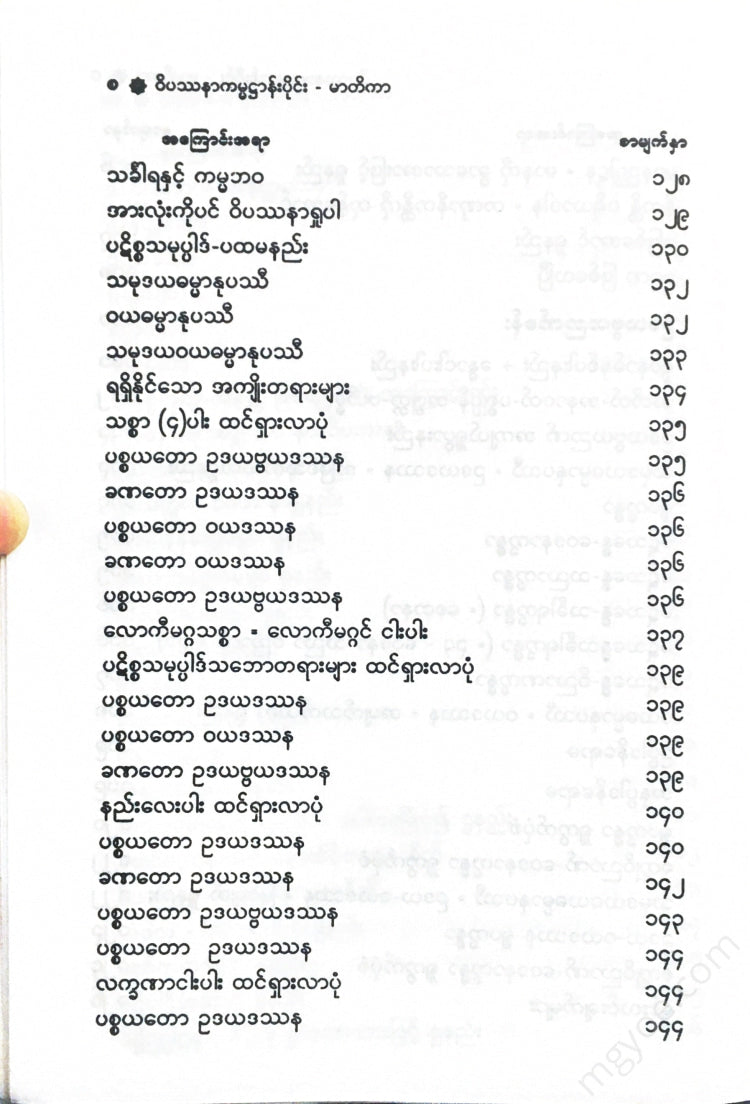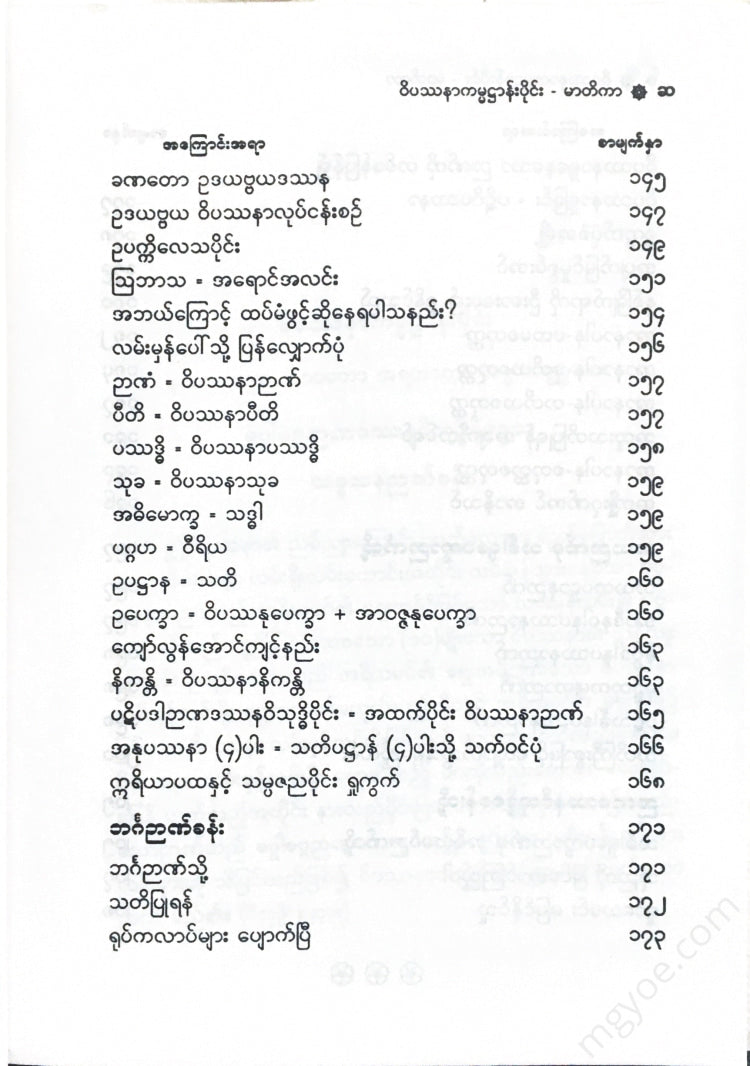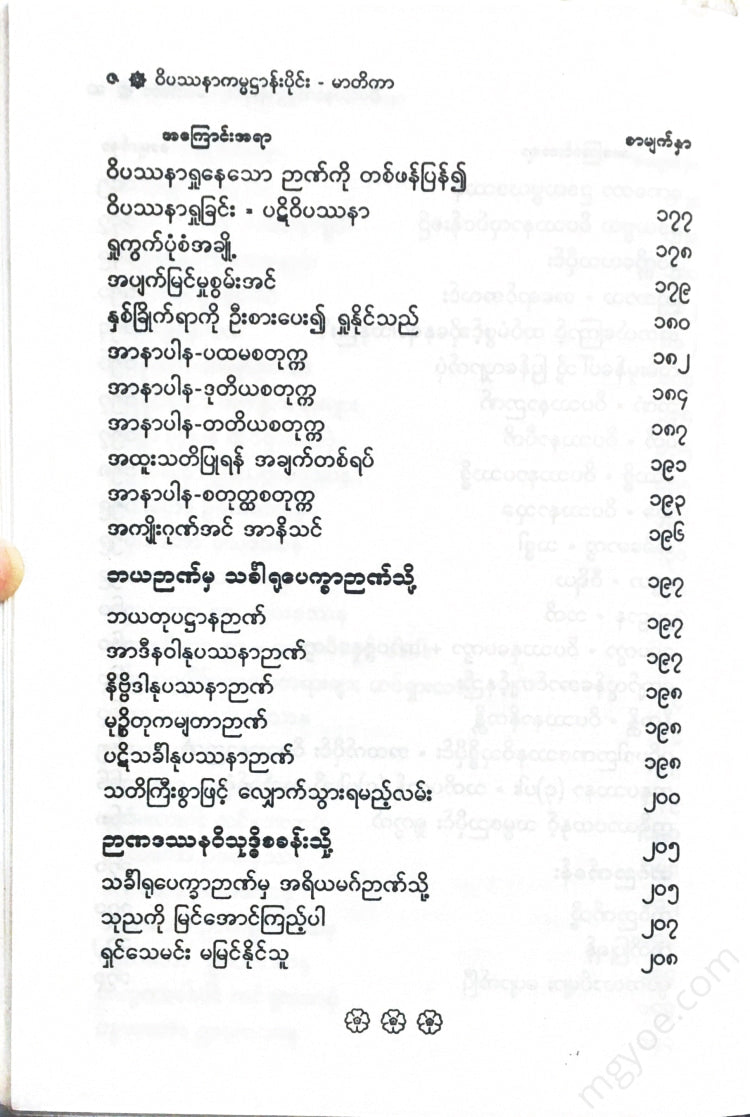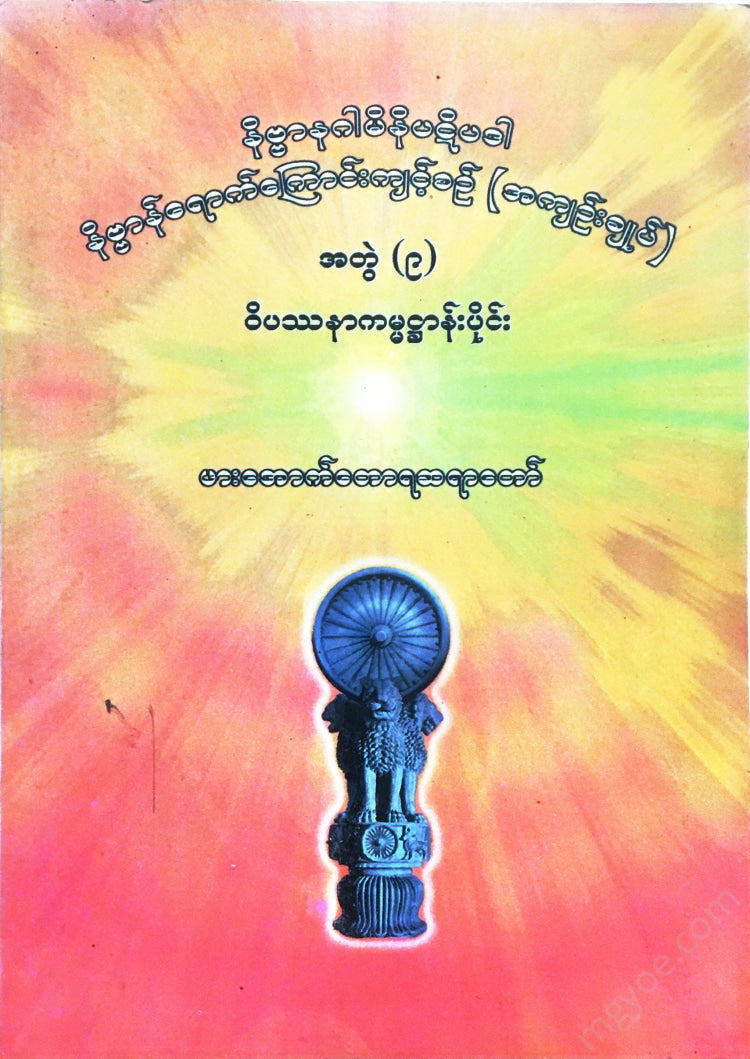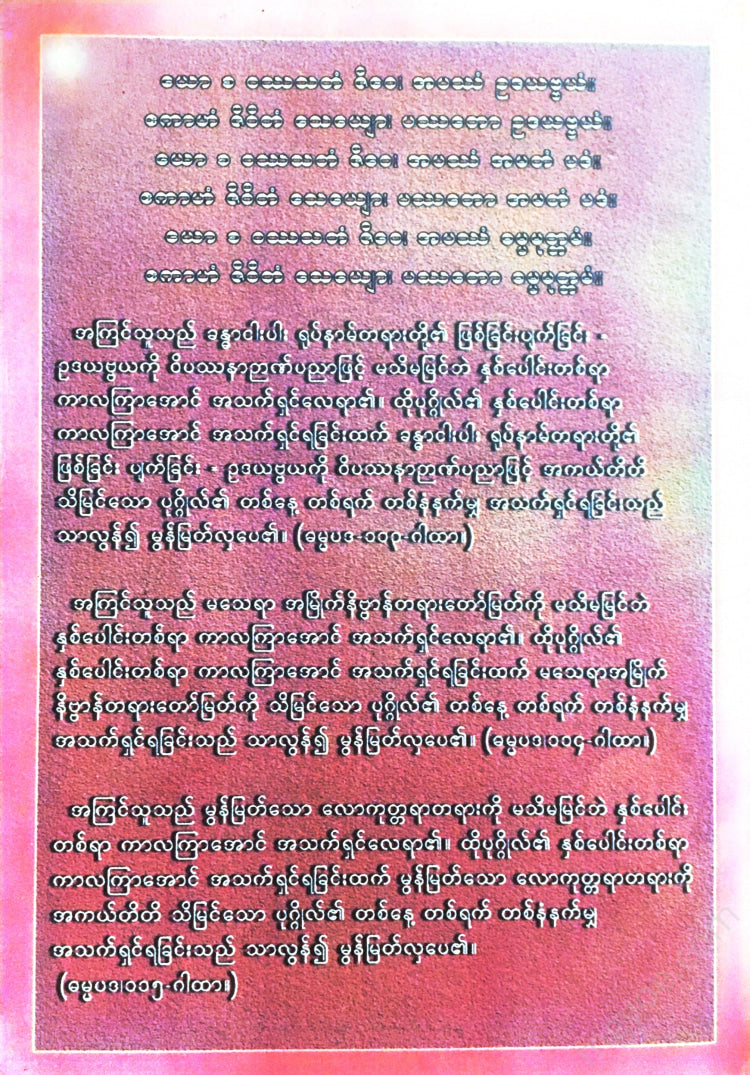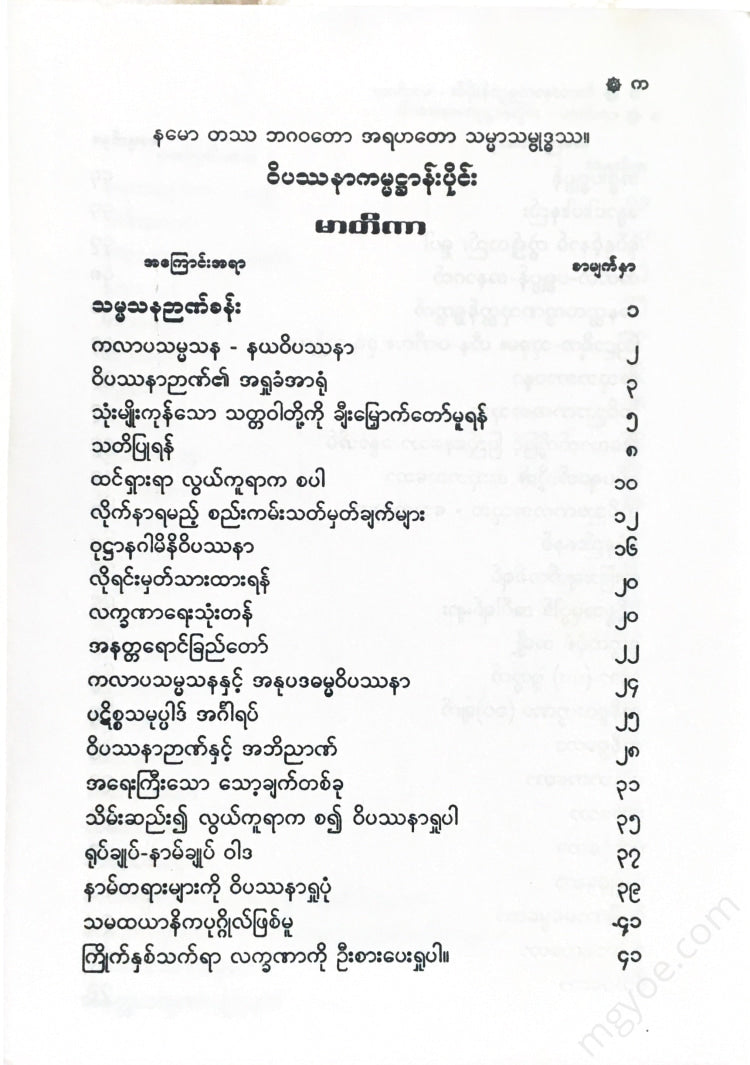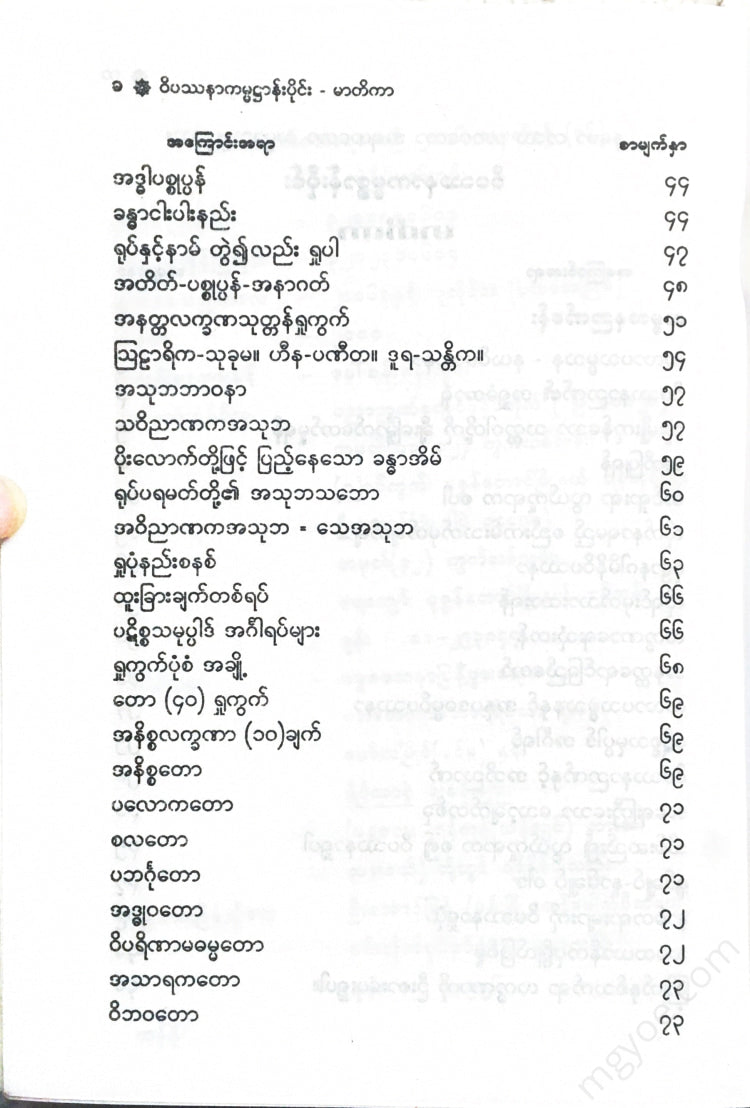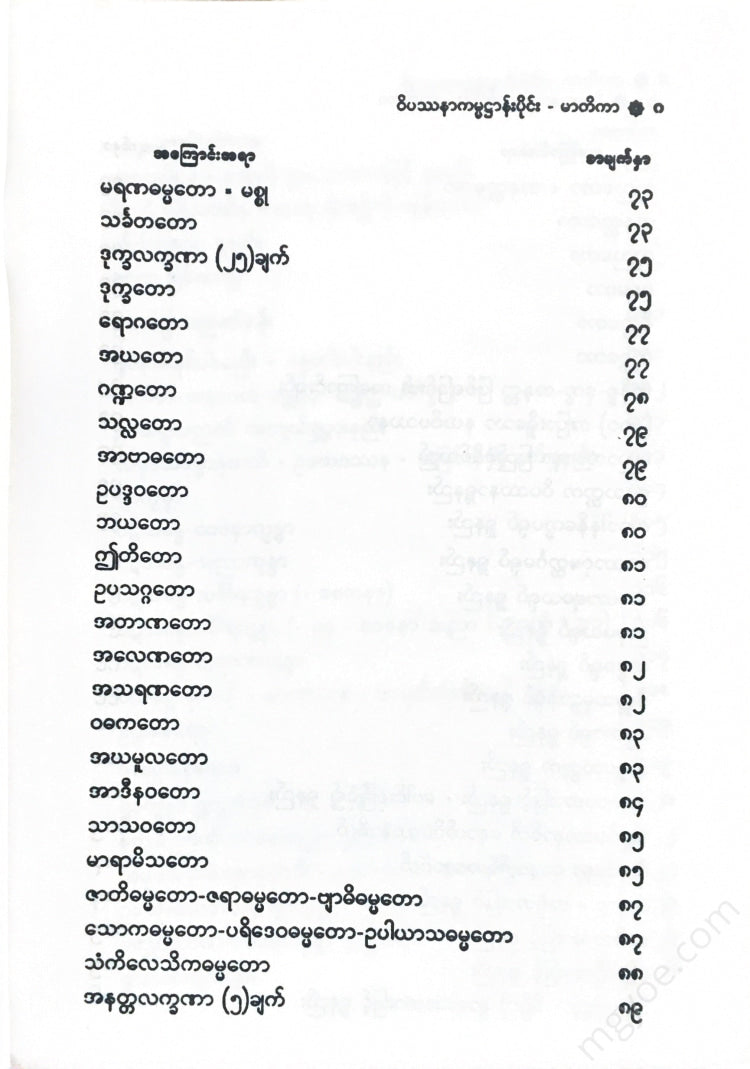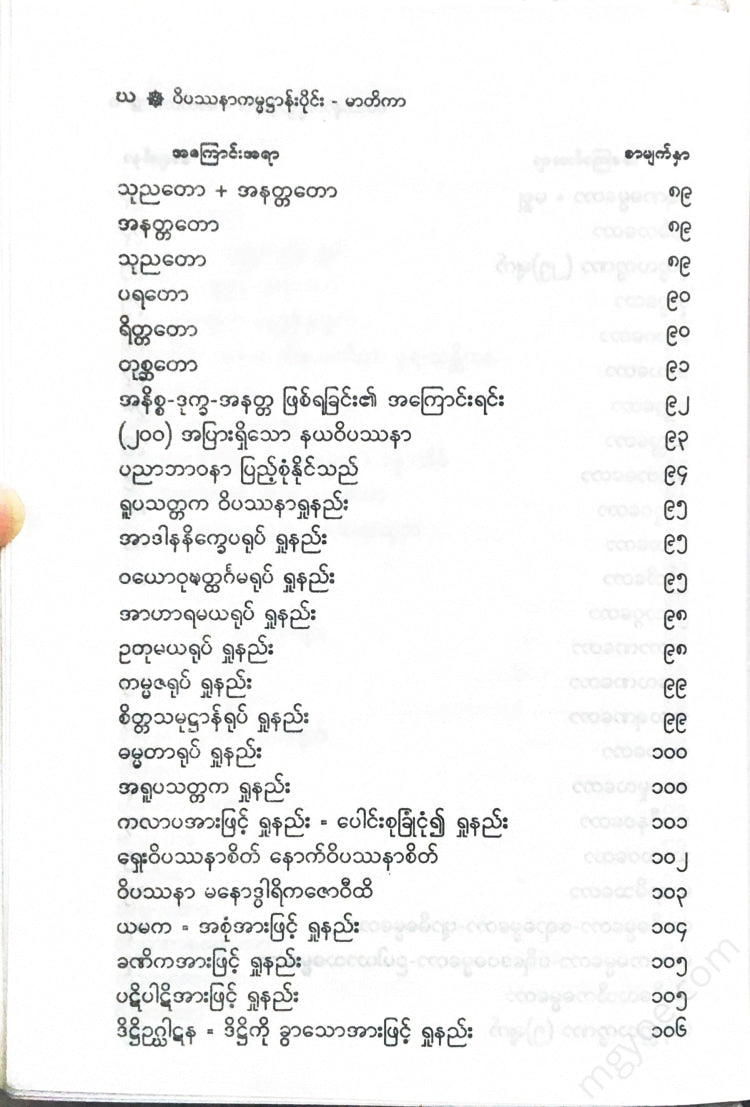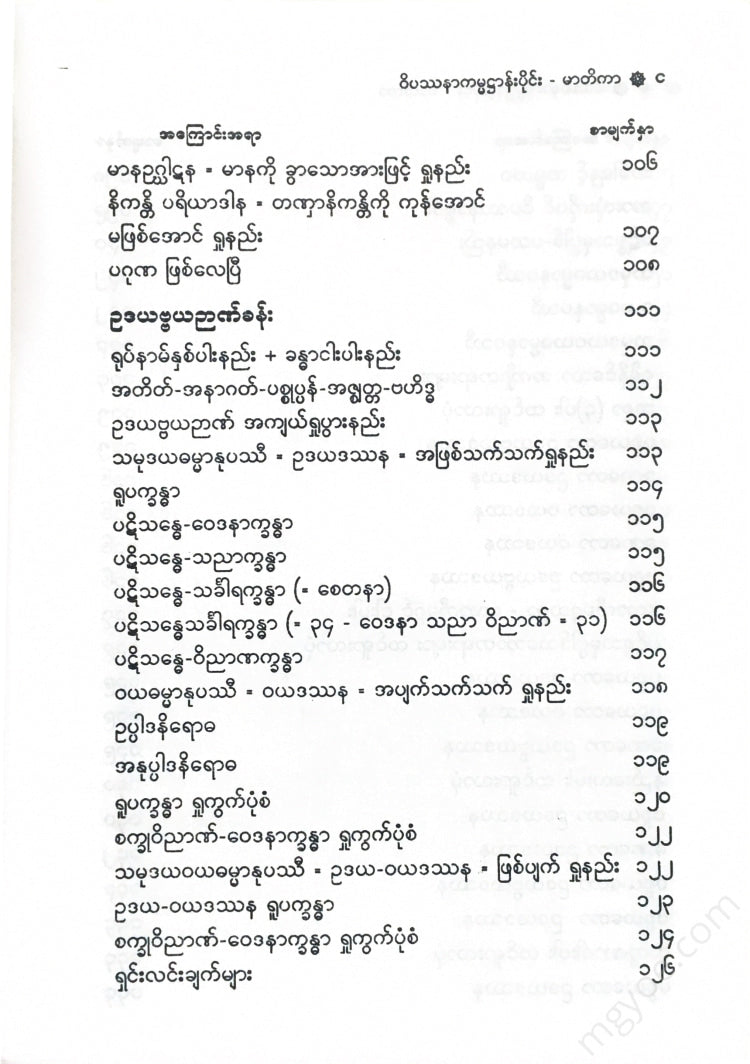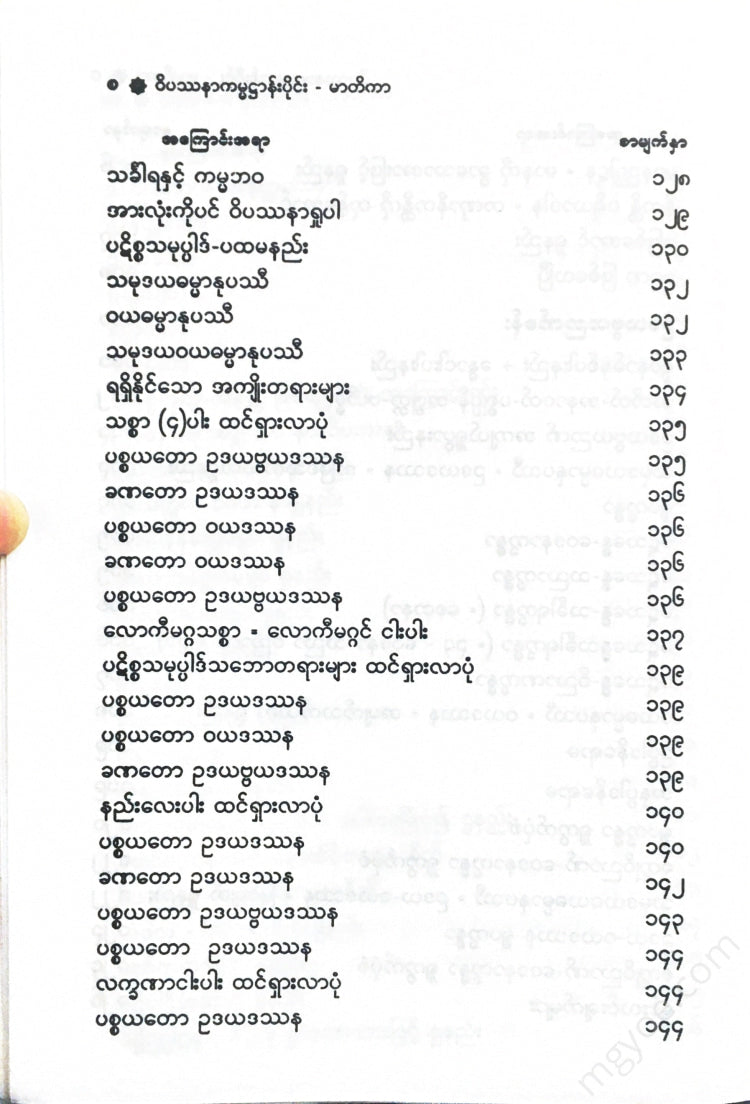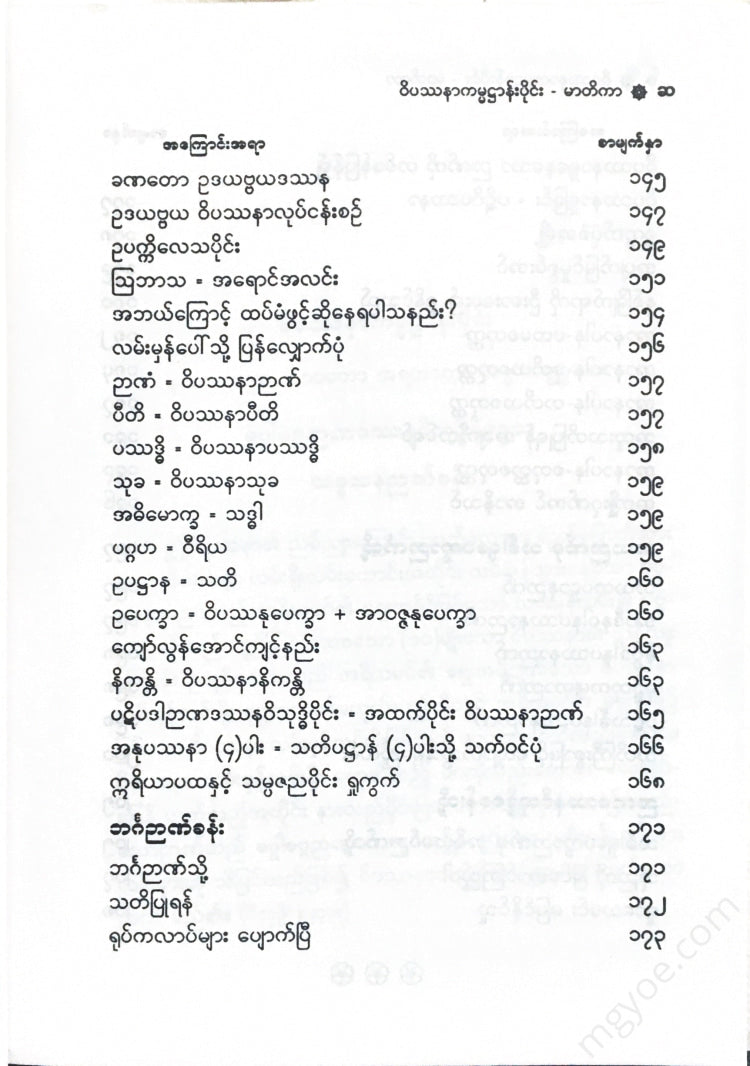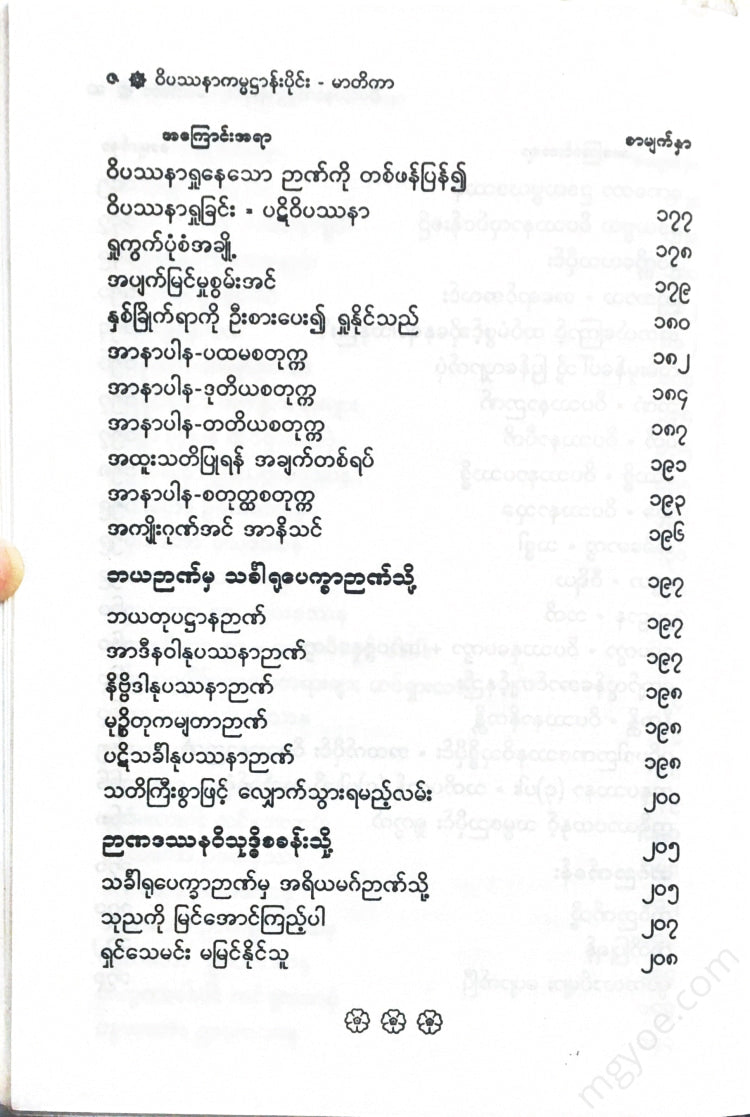Other Websites
Venerable Phor Aok Tora Sayadaw - The Practice of Attaining Nibbana (Summary) Volume (9)
Venerable Phor Aok Tora Sayadaw - The Practice of Attaining Nibbana (Summary) Volume (9)
Couldn't load pickup availability
This insight, which is free from the defilements of the path of insight, the path of insight that follows the old path of insight, is the path of the noble path, the path of the Buddha. These ten types of insight, which are the essence of insight, are:
The Upakkilesha is not the right path of insight, the path of the noble sage, the path of the noble sage. In this way, the path of insight, the path of the noble sage
Kalapasammasana - Naya Vipassana
A yogi who wishes to perfect the insight of the Magga Magga wisdom should begin with the insight of the Naya Vipassana, which is called Kalapasammasana. (Visuddhi, 2, 241.)
Kalapasammasana - The method of grouping together the three elements of form, name, and spirit, such as past, future, present, and external, and then placing them in turn in three different ways, is called Kalapasammasana. This name Kalapasammasana is a term used by the great monks who lived on the island of Jambudvipa.
Naya Vipassana - As the Buddha himself has explained in the discourses on the Dhamma of the Ten-Parivat, such as the Anattalakhana Sutta, the Yama, the Kinsa, the Rupa, the Atitana, the Nagata, etc. - past, future, present, non-existent, external, gross (unpleasant), subtle (unpleasant), and impure (unpleasant).
(gain), (distance), (near), (nearness), which are (11) states, are called Upadanakhandha.
1. The aggregate of material phenomena = physical body
2. The aggregate of suffering = Vādenākṇḍa
3. The aggregate of perceptions = the perceptual body
4. The aggregate of mental formations = mental body
5. The aggregate of consciousness = the mental body -
1. Arrange these Dhamma clusters into five groups, and place the three symbols one by one, and reflect on them with insight (the five aggregates method).
2. (12) Vipassana meditation (Ayatana - 12 - (Pāra Niyā))
3. (18) Vipassana meditation (18-step method)
Such methods of insight meditation are called Naya Vipassana. This name Naya Vipassana is a term used by the great monks who lived in Ceylon.
(Mahatma, 2386.)
The focus of insight meditation
1. The two-fold sense-perception, together with the two-fold sense-perception, arises in that one-fold sense-perception.
The six types of dhammas are: the dhammas of the body, the dhammas of the mind, and the dhammas of the soul.
2. The five aggregates of material body, sensory body, mental body, mental body, and spiritual body.
3. The six (6) dvaras are: Sakkhudvara, Sotadvara, Ghanadvara, Jivadhvara, Kayadvara, and Manadvara.
4. The six senses: vision, perception, perception of sound, perception of perception
5. Visual consciousness, Sota consciousness, Ghana consciousness, Jiva consciousness, Body consciousness, Mind consciousness
The six (6) consciousnesses,
6. The threefold concentration, the concentration of the body, the concentration of the mind, the concentration of the body, the concentration of the mind.
Six (6) phasas,
7. The pain of the threefold, the
The six types of suffering are: physical suffering, physical suffering, and mental suffering.
8. The six types of perception: perception of form, perception of feeling, perception of taste, perception of perception of objects, perception of objects, and perception of the Dhamma.
9. The physical, mental, emotional, spiritual, and spiritual aspects of the body.
The six virtues,
10. The six cravings are: craving for form, craving for pleasure, craving for smell, craving for taste, craving for the senses, craving for the Dhamma.
11. The six (6) vidakas, namely, the vidakas of form, the vidakas of truth, the vidakas of gandha, the vidakas of rasa, the vidakas of phothabba, the vidakas of dhamma,
12. The six (6) faculties are: the faculty of form, the faculty of mind, the faculty of consciousness, the faculty of perception
13. The elements of the earth, the elements of the air, the elements of the sky, the elements of the spirit,
(6) elements,
14. Ten (10) churches,
15. (32) Kothatha,
16. The twelve (12) ayatanas.
17. (18) elements,
18. The (22) senses,
19. The three elements: sensual, physical, and non-physical.
20. Sensual life, physical life, non-physical life, spiritual life, spiritual life, spiritual life, eternal life, eternal life, eternal life
(Asana) Four-fold life (four material realms) Five-fold life (11 material realms of sensuality, 15 material realms)
The nine great lives, 21. The four physical bodies,
22. The four non-self-sacrificing qualities are loving-kindness, compassion, equanimity, and equanimity.
23. The four (4) elements of the Arupajana Samabha.
24. The 12th day of the month of Patissamuppada -
Consider these to be aggregates of dhammas. (Visuddhi, 2243-244.)
To exalt the three kinds of beings
There are three types of beings who are worthy of being destroyed by the Buddha. In order to exalt all three types of beings, the Buddha used various methods such as the five aggregates of material existence to guide them in the field of insight.
If one cultivates insight meditation with the five aggregates, one can attain arahantship. If one cultivates insight meditation with the twelve aggregates, one can attain arahantship. If one cultivates insight meditation with the eighteen aggregates, one can attain arahantship. In this way, if one cultivates insight meditation with various methods, the necessary result of attaining arahantship can be achieved. Why did the Buddha not preach just one method but many different methods? The answer is that he preached in order to exalt three different kinds of beings.
1. Rupaṣa - A being who is lost in form.
2. Arupasambu - A being who is confused in the spiritual realm,
3. Ubayasala - A being who is confused in both form and name.
1. Tekkintiya = A being of great intelligence,
2. Majjimintiya = A being who is intermediate in sense perception and not in smell.
3. Mudintiya = A being who is endowed with sensual pleasures.
1. Sandhitarusi = A being who likes simplicity
2. Majjimarusi = A being who prefers the middle way, neither narrow nor wide,
3. Veikthararusi = A being who likes the wide way,
Thus, there are three kinds of uses among beings who are worthy of being liberated. In order to exalt beings who use these three kinds of uses, the Buddha has to adorn and preach such Dhamma in various ways.
1. (a) The immaterial, perfect being who is confused in the spiritual realm.
(b) A person of great intelligence and wisdom,
(c) A person who prefers conciseness -
To exalt such individuals, he taught them the five-fold method of insight meditation through sermons such as the Anattalakhana Sutta.
2. (a) A material being who is confused in material things,
(b) A person of moderate intelligence, with moderate faculties,
(c) A moderate person who prefers a moderate course of action, neither narrow nor wide -
In order to exalt such individuals, he preached and demonstrated the method of insight meditation in the twelve (12) ayatanas.
3. (a) A person who is confused in both form and name,
(b) A person who is endowed with sensuality,
(c) A person who prefers the broad approach -
In order to exalt such individuals, he guides them to the path of insight meditation through the (18) elements.
He taught the Vipassana meditation method in the Indiya method so that the essence of the divine can be easily and comfortably retained.
1. Pavatti = The origin of the five aggregates of suffering, the truth of suffering,
2. Pavattihetu = The cause of these truths of suffering,
3. Nivatthi = the cessation of this new suffering, the truth of the origin of suffering,
4. Nivatthihetu = The practice of the cessation of this new suffering, the truth of the origin of
Only if these four things are clearly understood and understood with the wisdom of right view can the various aspects of insight mentioned above lead to the various benefits of the path to Nibbana. He intended to make people understand that if these four things are not clearly understood and understood with the wisdom of right view, the path to Nibbana cannot be achieved, and he also explained and expounded the aspects of insight related to the path to the truth and the path to the cessation of suffering. (Mahathi, 2884-85.)
